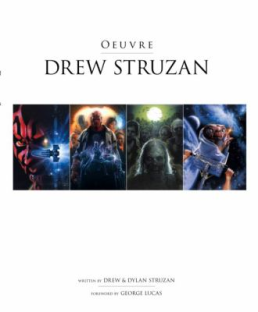 Anyone else here obsessed with the Serial podcast? I listened to the whole first season in one sitting. Yes, that’s 12 hours. No, I didn’t talk to anyone or move.
Anyone else here obsessed with the Serial podcast? I listened to the whole first season in one sitting. Yes, that’s 12 hours. No, I didn’t talk to anyone or move.
If you aren’t familiar with the series, it’s from the creators of This American Life with host Sarah Koenig. It tells one true story over the course of a season; hence the name.
The first season was a riveting story about Adnan Syed, a young man — wrongfully? — convicted of murdering his ex-girlfriend, Hae Min Lee in 1999. Using court documents, police interrogations, witness interviews and even driving tests, Koenig found far more information than was ever revealed in court. In fact, her investigation led to an appeal in Syed’s case (currently pending).
Season two follows another case: that of Robert Bowdrie Bergdahl, better known as Bowe Bergdahl. Bergdahl is the Army soldier captured in Afghanistan and held captive (and tortured) for five years by the Taliban. The circumstances of his capture and release have generated a lot of controversy. Donald Trump called for his execution. Is he a traitor? Is he a hero? Why did he leave his post? Was he working with the Taliban? Is he just a dumb kid who made a terrible, life-altering mistake? Koenig articulately captures the frustration of Bergdahl with his superiors, as well as the frustration and anger of the soldiers tasked with “rescuing” him. I hate to be the one that tells you, but you never really find out the answers. In December, Bergdahl was charged with one count of desertion with intent to shirk important or hazardous duty (Article 85) and one count of misbehavior before the enemy by endangering the safety of a command, unit or place (Article 99).

AP Photo/U.S. Army, file
I wanted to read more about Bergdahl himself, but it turns out that no one has written a book about him! Sebastian Junger should get on this. I did find this list of books to read if you’re addicted to season two of Serial. And while lists don’t usually do it for me, I read two of them: one from each end of the spectrum.
 No Way Out: A Story of Valor in the Mountains of Afghanistan, Mitch Weiss and Kevin Maurer
No Way Out: A Story of Valor in the Mountains of Afghanistan, Mitch Weiss and Kevin Maurer
I have read very few books about the Afghanistan War, even though it’s been going on most of my adult life, and I am friends with people that served there. Part of me thinks it’s surreal to read about a war that is still happening. And maybe part of me doesn’t want to know. No Way Out is the story of a Special Forces team dropped into an enemy-held valley with the mission to capture a terrorist leader. Instead they were ambushed, stuck in the Afghanistan mountains, continuously attacked by machine gun fire and rocked-propelled grenades. It’s fast-paced, especially the battle scenes, and you often have to remind yourself that you are reading non-fiction. This actually happened. While learning about the war, the battle and the weaponry, you are also introduced to individual soldiers, which makes the book better, but harder to read. When the battled ended, 10 soldiers were awarded the Silver Star, the Army’s third highest award for combat valor.
 Guantánamo Diary, Mohamedou Ould Slahi
Guantánamo Diary, Mohamedou Ould Slahi
This is the first (and only) diary written by a Guantánamo detainee. Mohamedou Slahi has been imprisoned at Guantánamo Bay, Cuba since 2002. It is very easy to think of the remaining 93 Guantánamo prisoners as faceless, nameless, American-hating religious extremists. But then there’s this German-trained engineer from Canada. In his third year he began a diary. By turns darkly funny and terrifying, Slahi recounts his life “before” U.S. custody. Page upon page of text have been black-bar redacted by the United States government. Slahi has never been charged with a crime. A federal judge ordered his release in 2010. The U.S. government appealed. Slahi remains in U.S. custody.
Serial fans, how did you feel about the last episode? Does Bergdahl seem like a traitor?
For the record, I think he was far more “dumb kid” than “needs to be executed.”
suzy













 Love is a Dog from Hell: Poems, 1974-1977
Love is a Dog from Hell: Poems, 1974-1977 You
You Mosquitoland
Mosquitoland Sea of Trees
Sea of Trees Poorly Drawn Lines: Good Ideas and Amazing Stories
Poorly Drawn Lines: Good Ideas and Amazing Stories
 Go Set a Watchman
Go Set a Watchman Star Wars: Aftermath
Star Wars: Aftermath American Pastoral
American Pastoral





 2 Candles
2 Candles















